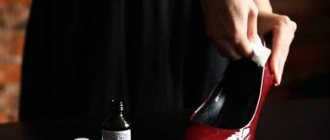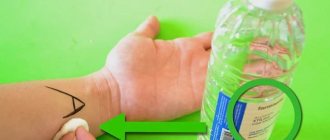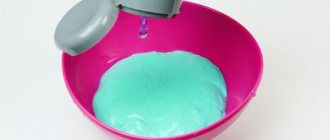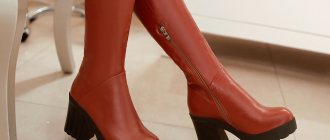Felt-tip pens have gradually become a part of our lives. Children love to draw with them, they are actively used in the office and in industry, in tailoring and in interior design. There is probably no home, business or office where there is not at least one felt-tip pen or marker. Accordingly, sometimes the question arises: what to do if the felt-tip pen has dried out? Is it possible to somehow restore its “working capacity” at least temporarily?
How to make an alcohol marker?
You take alcohol and an old marker or felt-tip pen (This is the most banal way). You pour alcohol into a glass. The more, the paler the color will be. Then you pull out the writing “nose” from the marker and throw it there. ... How to start drawing if you are already an adult?
- topics
- flowers
- materials
- the techniques used.
27 Feb
2022 Interesting materials:
What foods cleanse the gallbladder? What food products can be transferred to a pre-trial detention center? What foods lower blood pressure? What professions belong to the economic sphere? What works are included in the Cthulhu mythos? Which tablet manufacturers are good? What gaskets are best? What fog lights should I put on a viburnum? What birds live in the Wrangel Island Nature Reserve? What birds remain to spend the winter in Ukraine?
What if the marker is dry?
What to do. First, understand the composition of the writing medium. For example, I stopped writing with a water-based felt-tip pen.
Most often this happens because the water that allows the dye to drain has run out or dried out. In this case, there are several ways to restore the felt-tip pen and give it a second life:
- If the design of the felt-tip pen is such that it can be easily disassembled, then it is necessary to completely remove the rod and place it in a bowl of warm or even hot water. This is necessary so that the rod is completely saturated and the remaining dye is evenly distributed inside.
- If a non-separable felt-tip pen has dried up, you can try to revive it by dipping only the tip into hot water and leaving it there for a while. In addition, you can simultaneously try to introduce water into the rod and on the other side of the felt-tip pen. This can be done using a syringe. When pouring water into the syringe, do not overdo it, as you can completely wash the dye out of the felt-tip pen.
- Another interesting and effective way to restore a water-based marker is to wet the tip with vinegar. To do this, you can apply a few drops using a pipette or the same syringe.
Unfortunately, all of the above methods will not help if the dye runs out in the rod. By the way, with intensive refueling or a large amount of water poured, you may accidentally wash it yourself.
We prepare a special dressing from simple ingredients
There are two ways to prepare a special dressing. So, what to refill the marker with?
For the first option, you will need: water, gouache, ink, powder, PVA glue, two tablespoons of sugar and a half-liter container.
First you need to fill the vessel one third with water. Next, gouache and powder are added to the water. Beat thoroughly and slowly add mascara. To prevent the dressing from turning out too black, it is important not to overdo it. After this, you need to add 20 drops of glue to the mixture and mix the mass thoroughly again. Sugar is added to achieve homogeneity. The mixture is whipped again - the dressing is ready!
For the second method you will need: two containers, a ballpoint and gel pen, a touch-corrector, nail polish, acetone, hairspray, brilliant green.
First you need to pour the bar corrector into one container and then let it dry. Grind the dried mass into powder and pour into another container. Ink from a ballpoint pen and ink of the desired color from a gel pen are also added there.
Add brilliant green and nail polish of a suitable color to the resulting mass. All this is fixed with hairspray and mixed thoroughly. Next you need to add nail polish remover or acetone. That's all. The gas station is ready!
What is the difference between regular markers and sketching markers?
Sketching markers are professional analogues of children's felt-tip pens, but sketching markers have a much wider palette of shades, higher build quality of the body and nibs.
Interesting materials:
When to prune raspberries in autumn or spring? When to prune peonies in the fall? When to prune roses in autumn or spring? When to prune a plum tree in spring or autumn? When to prune currants in spring or autumn? When to prune grapes in autumn or spring? When to prune cherry trees in spring or autumn? When to trim roses in the fall and cover them? When do autumn honey mushrooms appear? When to water trees and shrubs in the fall?
Uni Posca Marker Effects
Effects available when using POSCA markers:
- Blurring with a wet brush or water. Before the ink dries completely, you need to brush a brush moistened with water over the material until the desired effect is achieved.
- Mixing several colors. After application, you can mix colors with each other, create gradients and get new shades. This can be done using a tip, brush or piece of cloth.
- Color overlay. POSCA paint has a high coverage density and is therefore ideal for layering. After drying, the inscriptions can be covered with a new color.
- Spraying and splashing. To achieve this effect, you need to saturate the tip with ink, then, holding the marker parallel to the work surface, blow (carefully!) onto its tip. We recommend practicing on a draft before using it. This technique is ideal for working with wide tip markers: PC-5M, PC-7M, PC-8K and PC-17K.
Before starting work, the marker must be shaken to mix and distribute ink evenly. Markers are suitable for such areas of creativity as:
- Street art
- illustration
- painting
- architecture
- design
- applied arts
- design work
You can buy Posca art markers at affordable prices in retail stores or in the Art-Kvartal online store. The composition and unique qualities remain unchanged and delight artists to this day.
The deep black color of the body, the five colored letters of the logo and the signature UNI - the POSCA marker is recognizable from afar. Simple and memorable design - laconic. The POSCA marker encourages creative expression for all users, working on any surface and in any genre from graffiti to fine art, from illustration to street art, from portraits to all types of customization.
marker length – 140mm, diameter – 16mm.
How to refill a set of water-based markers: a miracle product at hand!
Answer to the question: “What to refill water-based markers with?” lies in the question itself. Since water acts as a solvent, it means that dried paint can be “reanimated” with ordinary water. This is done in several ways.
Using water, you can return the ink to its original brightness.
- You can fill the felt rod, which is the dye reservoir, using a regular syringe filled with water.
Having removed the cap from the end of the body, you should carefully introduce water into the center of the rod, preferably gradually, 10-15 drops at a time. The main thing is not to overdo it: if there is more water than necessary, it will begin to flow through the tip and wash out the dye. As water is introduced, the felt rod will begin to lighten from the edge where the water is introduced. This is how it should be; this reaction indicates that the paint has begun to dissolve and flow to the tip. After refilling, you should leave the markers in a vertical position (writing end down), and after 3-4 hours, check the effectiveness of the procedure by comparing the color intensity with the control indicator, which must be done before refilling. If necessary, you can add a few more drops of water. - The second method is simpler in some ways, more difficult in others. To dissolve the paint, remove the entire felt rod from the body and dip one end into water. Water will evenly saturate the entire tube in the optimal amount, after which it must be inserted into place, pressing on it so that the writing rod enters the reservoir. But not everyone can take apart a felt-tip pen without getting dirty or breaking anything in it.
In principle, the methods described above are not refilling markers in the literal sense: rather, they are re-dissolving the dye remaining in the reservoir. To refill water-based markers, it is recommended to use water in combination with water-soluble dyes: ink, paint for cartridges, etc.
Similar articles
- How to clean drains with baking soda and vinegar
- How to starch laundry by hand
- What mode should I use to wash white clothes?
- Vinegar when washing
- The wine is washed off
What is a permanent marker used for?
In appearance, a permanent marker is no different from a regular marker. ... Such markers are used for applying inscriptions and drawings to various surfaces, including metal, glass, and plastic.
Interesting materials:
How to clean a tiled floor to avoid streaks? How to wash brushes after acrylic paints? What do you stuff a punching bag with? What is the Amur region best known for? How to cover the baked goods after the oven? What should you not feed Achatina snails? The lower the inflation, the lower? How to disinfect a compost heap? What is the tax on the Extra Daily Allowance? How are the rolls wrapped?
Methods for refilling a felt-tip pen
To be completely honest, all of the above methods do not refill, but rather dissolve the dye already present in the felt-tip pen, that is, they actually help if the felt-tip pen has dried out. What to do when the dye runs out?
You can try adding printer ink to the refill or use various household dyes, such as brilliant green, manganese, etc. But remember that felt-tip pens filled in this way will not last you long. And their price is quite low and does not justify such efforts. All these methods are more suitable when it is not possible to purchase a new felt-tip pen at this very moment.
Additionally, some alcohol markers are not designed to be refilled. If you try to bring them back to life, you will simply fail. This information is usually indicated on the packaging. Most often these are expensive art markers or, on the contrary, cheap Chinese ones, in which all the dye instantly flows out.
The number of “refills” in any case will depend on how much dye was originally in the felt-tip pen. If the manufacturer immediately saved money, then such a felt-tip pen will not serve you for long, no matter how hard you try.
We draw on any surfaces
POSCA markers can be used on almost any surface: paper, glass, cardboard, wood, porcelain, metal, textiles, ceramics, plastic and much more. The color will be durable on rough or porous surfaces and washable on perfectly smooth ones. When your creation is ready and dry, it is recommended to further secure the paint layer. Fixation methods will depend on the surface on which the design was applied.
It is advisable to store POSCA markers in a horizontal position with the cap firmly on.
Review of Uni Posca acrylic markers
Having worked with these markers for some time, I decided to talk about their features, given that the material is interesting, and almost nothing has been written about it in the Russian-language segment.
I bought my markers individually at Jacksons (until July 29 you can buy the markers from the post with a small discount). The main goal was to draw in a notebook with black pages, so as not to fiddle with paints every time I wanted to draw something. What can I say - the markers cope with their task one hundred percent, they are very bright and covering, excellent for decorative work. It is also possible to make smooth transitions, but with a little trick, and more on that below.
The markers themselves are quite massive and weighty, that is, you can carry them with you, but only in a bag. The caps close tightly and without problems, and what turned out to be a surprise - they quite accurately match the color of the marker. There is a ball inside the marker, and in order to squeeze out the paint (and draw for the first time), you need to press down on the marker - be careful, some colors may squeeze out puddles.
To start, I chose a palette of 8 colors in medium and light tones, as I was afraid that the dark colors would not be visible on the black paper. The fears turned out to be not entirely justified, since in addition to the paper itself, you can draw with markers on top of each other, but here the brightness of the color does not matter so much. In general, I hope to expand my palette a little, especially towards blue, red and green shades. My markers have a fairly large bullet tip since I have a fairly large notebook format. But there are more subtle options, choose based on your tasks and format.
The lighter the marker, the more likely it is that you will have to paint the same place twice, or constantly squeeze out a new amount of paint. Markers work best on a smooth surface, because the felt tip is a little rough and if you rub it over one place a lot, pellets may appear. Goes great with anything, pencils, permanent markers, white gel pen, regular paints and so on. Almost anywhere you need a dense, opaque spot these markers are suitable. In addition to paper, you can draw on glass, wood, plastic, and whatever your imagination allows. I have a couple of Molotov and Posca markers, which I personally think are more opaque and matte. I have uploaded several works on black paper to the gallery so that you have an idea of how these markers behave in reality.
I saw how to mix markers in one of the videos on YouTube - you need an elastic synthetic brush and two markers. Apply both colors side by side and while the paint is wet, carefully spread the border with a brush. The closer the tone, the better the result.
Reviews and descriptions of various materials for creativity - markers, paper, paints and everything else.











